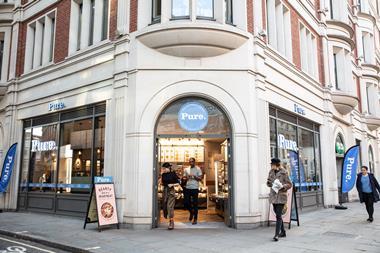Inside Track by Peter Martin
The UK eating out market has shown itself to be increasingly consumer sensitive. It is one of its strengths and reasons for the continued growth in eating out of the home.
The market is usually quick to react to public taste, and occasionally to lead it. Organic, free-range, GM-free, low-fat, nut-free have all been taken on board by restaurant chains.
So why does the restaurant market - with a few notable exceptions - seem so slow to latch onto the low-carb trend?
The US market is being flooded with low-carb products, from beer to pizza to snack bars, on the back of the undoubted popularity of the Atkins and South Beach diets. A glance at the best selling lists for diet books underlines the grip these two now exert on the weight-loss market. Even Weight Watchers is going low-carb.
McDonald’s, Subway and TGI Fridays are all developing low-carbohydrate menu items.
Despite the controversy, especially over Atkins, low-carbohydrate and high protein eating regimes are proving to be more than a fad. There are an estimated three million Atkins followers in the UK.
Perhaps the reason the UK eating-out market has yet to go all-out behind promoting low-carb menus is that the country’s major supermarkets have also yet to fully exploit the trend.
Measuring the shelf space given over to particular food types and styles is one way canny restaurant operators have sought easy reassurance that their particular offering might go down well in a region.
But low-carb is coming big time. A survey by Reuters published last month showed that 95% of food manufacturers in Europe and the US are now considering an assault on the market. The report says that the overwhelming majority of manufacturers claim they cannot afford to ignore the impact of low-carb dieting, with a quarter treating it as a priority.
Nestle has announced low-carb versions of Kit-Kat and Rolo and Cola-Cola is launching a low-carb cola called C2 in the US and Japan. Unilever has even taken to monitoring the sales of food books to keep in tune with consumer tastes.
The eating-out market shouldn’t beat itself up too much. It will catch the low-carb wave very soon, but this might be a reminder that it doesn’t always have to wait for the US or the supermarkets and might profit from being a little more proactive.











































